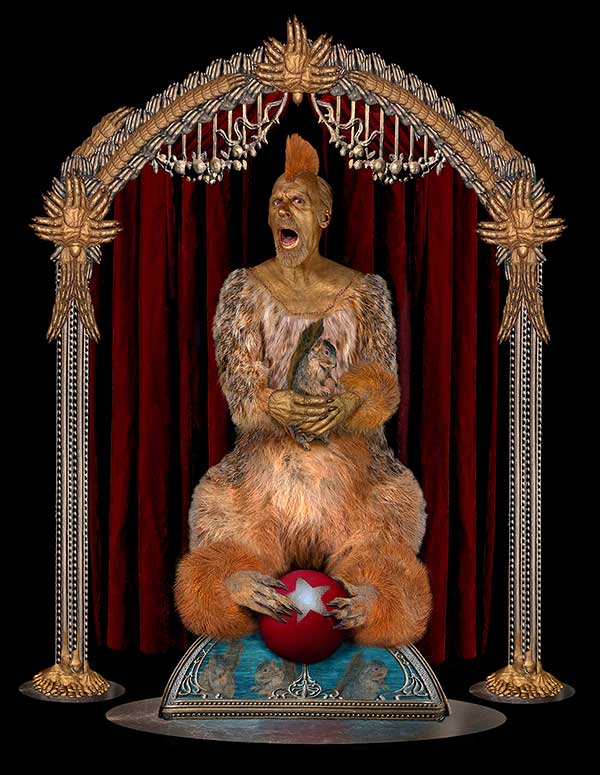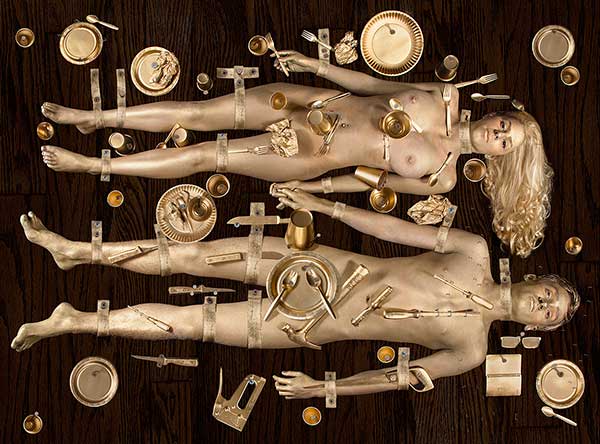


Lou Krueger
“The Temple of Wonders”October 9-November 29, 2014
Reception October 9, 7-9pmIn conjunction with the Downtown Art Walk
"The Temple of Wonders" July 2013
In the artist's words:
"I once read that the general audience spends on average four seconds looking at each artwork in a gallery, museum or exhibition setting. My initial goal, then, would be to inspire at least ten. Ten time-worthy, compelling, provocative seconds—seconds enough to slow the viewer down and create a small hole in the crush of the everyday that opens onto a world of reflection.
I believe that at its best fine art is an exposed earnest statement that takes risks, pushes boundaries, inspires reflection and encourages discovery. For me much of the joy of making art is the attempt—drip by drip—to reveal the truth of the image. I’m not interested in creating work for which I already have the answer.
I believe that art is a mediation between that which exists and that which is imagined, a swinging pendulum between reason and intuition, an act of expression that affirms our existence.
I believe in the power of stories. I am a storyteller."
“The Temple of Wonders” (the series)
I had polio as a child and developed epilepsy as an adult. Somewhere in between I suffered a cardiac death and traveled—floated, really—through a corridor of light only to joyfully reach my destination and be told the bad news, “Go back. We’re not ready for you yet.” I use a machine to help me breathe when I sleep, my shoulder is held together with screws, my jaw is wired together in multiple places, I have a device implanted in my body to regulate my heart, and I recently had a hip removed and replaced with titanium, chromium, and polyethylene. Is this normal? Am I normal?“The Temple of Wonders” asks: Who, or what, is normal? Where does it begin and where does it end? And what of the body: Did I betray it or did it betray me? Or both? Or neither?
Much like the circus sideshow my photographs acknowledge the physical embodiment of human anomaly and psychological aberration at its furthest edge. With their hyperbolic exaggerations, blends of the real with the artificial, and their promises of the impossible they seek to provide manifestations of absurd worlds at the extremes, clearly off the norm. As such, they represent a montage of the authentic and the invented, an assault on the senses that is perfectly suited for manipulations at the margins and, in particular, photographs of the body. And in this carefully crafted environment a body with its gold painted armor can survive almost anything. It’s only the psyche that’s at risk.
I should also note that my work owes a large debt to the photographs of Charles Eisenmann, a 19th century studio photographer who specialized in thoughtfully dignified portraits of sideshow performers, Edward Kelty, a Manhattan banquet photographer of 1920’s East Coast circuses, and the brilliant artifice and exaggerations of the dime museum huckster, marketing genius, and circus owner P.T. Barnum. It was his over-the-top hybrid realities in combination with the somewhat gruesome photographs of the stapled flesh from my hip-replacement surgery that served as the final inspiration for this ongoing body of work.The physical wounds—the stitching, the stapling, the scars—are actually mine. The psychological pain belongs to us all.
Is this normal?
—Lou Krueger
September, 2014
"Squirrel Man" June 2013
"Picnic With Hand Tools and Hardware: A Love story" May 2014
.
This site and its entire contents © 2004-2014 Los Angeles Center For Digital Art
All Rights Reserved.
Works of individual artists remain the intellectual property and are copyrighted by their respective authors. No unauthorized reproduction, all rights reserved.
|
|




